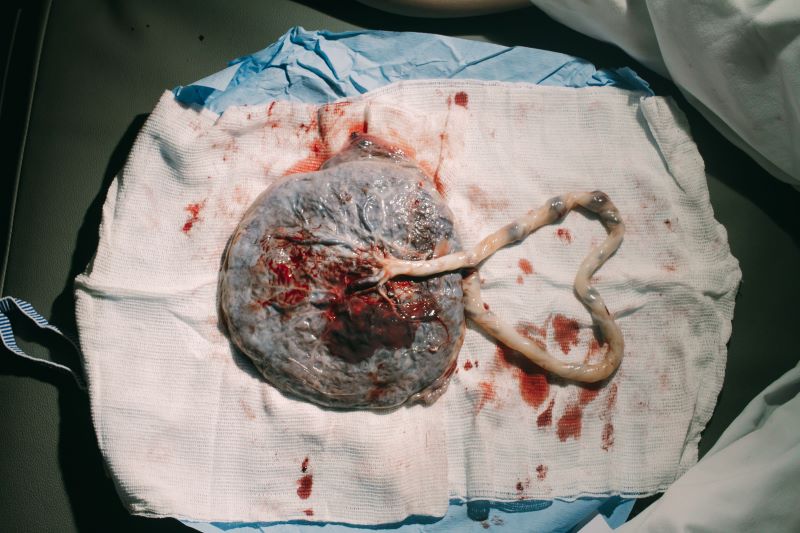By Dr. Ruth Dana and Dr. Travis Whitney
In recent years, medical science has made remarkable strides in harnessing the potential of stem cells for therapeutic purposes. Among these, umbilical cord-derived mesenchymal stem cells (UC-MSCs), commonly referred to as Wharton’s Jelly, have garnered attention for their promising applications in regenerative medicine. If you’re considering these therapies, it’s understandable to have concerns about their safety. This comprehensive guide will delve into the safety aspects of clinical Wharton’s Jelly stem cell treatments, providing you with the information you need to make an informed decision about your healthcare.
Understanding Umbilical Cord-Derived Mesenchymal Stem Cells (UC-MSCs)
Wharton’s Jelly is a gelatinous substance found within the umbilical cord. It contains a rich source of mesenchymal stem cells (MSCs), which are versatile cells capable of differentiating into various cell types in the body. This unique characteristic has led to their potential use in treating a wide range of conditions, from orthopedic issues to autoimmune disorders.
- Natural, Abundant Source
UC-MSCs are widely available, as they are harvested from healthy donors after birth. This prevents ethical dilemmas and does not endanger the mother or baby.
- Youthful Capacity
In contrast to autologous mesenchymal stem cells, which are harvested from an individual’s bone marrow or fat tissue, UC-MSCs have a greater youthful potency and a higher capacity to self-replicate. As we age and contract certain diseases, some of our stem cells may become senescent. This means they may lack the same degree of proliferative capacity or the ability to regenerate into needed tissues for repair.
- Viability
At Innate Healthcare Institute, we use UC-MSCs that were recently harvested, expanded, and tested for viability, so that your treatment has a stronger therapeutic potential.
- Healing Characteristics
Viable UC-MSCs can self-replicate, hone to areas of damage and inflammation, and send signals to the body that helps orchestrate healing and regeneration. They have specific stemness, meaning they can become some, but not all types of cells in the body. As of what we know now, they may become neurons, skeletal muscle, bone, cartilage, pancreatic or retinal cells (Gauthaman et al, 2012).
The Safety Profile
Before undergoing any medical procedure, it is important to consider the risks. Fortunately, clinical research on UC-MSCs has generated promising results in terms of safety. Multiple studies have reported minimal adverse effects and a low risk of complications associated with these treatments.
1. Low Immunogenicity
One of the key safety advantages of UC-MSCs is their low immunogenicity, meaning they are not likely to trigger adverse immune responses in recipients. This reduces the risk of rejection and negative effects, making them an attractive option for therapeutic use 1.
2. Non-Tumorigenic Potential
UC-MSCs not only possess a reduced tendency to form tumors compared to previously researched embryonic stem cells, but they also inhibit the growth of tumors. In addition, they are anti-inflammatory, while embryonic stem cells are pro-inflammatory. These characteristics enhance their safety profile for therapeutic use.
3. Few Adverse Effects
Clinical studies involving Wharton’s Jelly stem cell therapies have shown a notable absence of severe adverse reactions. Minor side effects, such as transient fever, heart palpitations, or discomfort at the injection site, are generally well-tolerated and resolve on their own.
Clinical Evidence
The safety of any medical treatment is best assessed through rigorous clinical trials and scientific research. Since 2009, numerous clinical trials have explored the safety of umbilical cord-derived stem cell therapy, providing valuable insights into its potential risks and benefits.
While most of the existing clinical research has been on smaller numbers of patients receiving therapy, the lack of reported adverse events from UC-MSC transplantations is encouraging. A review of peer-reviewed studies on UC-MSCs on 2001 patients with 53 different illnesses showed that no tumor formation, cell rejection, or long-term adverse events were reported.
One study followed up after 6 years on nine patients that received UC-MSC transplantations for Lupus. No adverse events aside from one patient having transient discomfort when first receiving the therapy were reported. No tumor markers were elevated, and no new-onset abnormalities were found on electrocardiogram or chest radiography. Though larger long-term studies are warranted, this supports our understanding of a good safety profile for the clinical use of UC-MSCs.
Considerations for Patients
While the safety profile of Wharton’s Jelly stem cell therapy appears promising, it’s essential for patients to approach these treatments with a realistic understanding of their potential benefits and limitations. Here are some key considerations:
1. Consultation with Healthcare Professionals
Before undergoing any stem cell therapy, it is imperative to consult with a qualified healthcare professional, especially one experienced in regenerative medicine procedures such as UC-MSC therapies. They can assess your medical history, discuss treatment options, and provide personalized recommendations based on your symptoms and conditions.
2. Evidence-Based Decisions
Use clinical research and scientific data to inform your decisions. Consider pursuing medical interventions that have undergone thorough examination and that are supported by well designed, peer-reviewed medical literature.
3. Realistic Expectations
While umbilical cord-derived stem cell therapy holds immense potential, it’s important to maintain realistic expectations. Not all conditions respond equally to this treatment, and outcomes may vary from person to person.
Considerations for Travel
Medical tourism in stem cell medicine has gained a lot of attention over the recent years. This is where people travel to other countries to receive stem cell treatments. While this is certainly successful for many, there are cons associated with traveling overseas. Some foreign countries can be unsafe for tourists. Also, many of these clinics charge very excessive fees since they’re banking on the patient thinking traveling to the clinic is their only option, there is lots of time and stress associated with extensive traveling.
The reality is that many chronic conditions may require multiple treatments. Many overseas clinics market to unsuspecting patients that are hoping a single stem cell treatment will cure all their ailments. With some research, the best solution might be staying inside the US for proper and affordable care. This is one of the biggest goals at Innate Healthcare Institute–to limit Americans from traveling overseas for expensive procedures that can be done for less and are more readily available.
4. Monitoring and Follow-Up
After receiving stem cell therapy, you should expect regular follow-up with your healthcare provider. At Innate Healthcare Institute, we monitor your progress regularly. This allows us to address any concerns promptly. This may contribute to safer and more successful treatment outcomes.
In Conclusion
UC-MSC therapy offers compelling treatment options in regenerative medicine with a promising safety profile. Research shows that these cells have the potential to treat a range of illnesses with a low risk of unwanted side effects. When making any medical decision, do your research and consult with a qualified healthcare professional to help determine whether this treatment is right for you. With ongoing advancements in stem cell research, the potential of UC-MSCs to provide hope and better outcomes to many people with a variety of illnesses will continue to expand.
References
- Can, A., Celikkan, F. T., & Cinar, O. (2017). Umbilical cord mesenchymal stromal cell transplantations: a systemic analysis of clinical trials. Cytotherapy, 19(12), 1351-1382.
- Gauthaman, K., Fong, C. Y., Suganya, C. A., Subramanian, A., Biswas, A., Choolani, M., & Bongso, A. (2012). Extra-embryonic human Wharton’s jelly stem cells do not induce tumorigenesis, unlike human embryonic stem cells. Reproductive biomedicine online, 24(2), 235-246.
- Kim, D. W., Staples, M., Shinozuka, K., Pantcheva, P., & Kang, S. D. (2013). Wharton’s jelly-derived mesenchymal stem cells: phenotypic characterization and optimizing their therapeutic potential for clinical applications. International Journal of Molecular Sciences, 14(6), 11692-11712.
- McGuirk, J. P., Smith, J. R., Divine, C. L., Zuniga, M., & Weiss, M. L. (2015). Wharton’s jelly-derived mesenchymal stromal cells as a promising cellular therapeutic strategy for the management of graft-versus-host disease. Pharmaceuticals, 8(2), 196-220.
- Wang, D., Niu, L., Feng, X., Yuan, X., & Zhao, S. (2019). Safety of allogeneic umbilical cord blood stem cells therapy in patients with severe deforming osteoarthritis. Journal of Translational Medicine, 17(1), 367.
- Wang, D., Niu, L., Feng, X., Yuan, X., Zhao, S., Zhang, H., … & Sun, L. (2017). Long-term safety of umbilical cord mesenchymal stem cells transplantation for systemic lupus erythematosus: a 6-year follow-up study. Clinical and Experimental Medicine, 17, 333-340.
- Tian, K., Yang, S., Ren, Q., Han, Z., Lu, S., Ma, F., … & Han, Z. (2011). p38 MAPK contributes to the growth inhibition of leukemic tumor cells mediated by human umbilical cord mesenchymal stem cells. Cellular Physiology and Biochemistry, 26(6), 799-808.
- Tan, J., Wu, W., Xu, X., Liao, L., Zheng, F., & Messinger, S. (2012). Induction therapy with autologous mesenchymal stem cells in living-related kidney transplants
- Subramanian, A., Fong, C. Y., Biswas, A., & Bongso, A. (2015). Comparative characterization of cells from the various compartments of the human umbilical cord shows that the Wharton’s jelly compartment provides the best source of clinically utilizable mesenchymal stem cells. PLoS One, 10(6), e0127992
- Weiss, M. L., Anderson, C., Medicetty, S., Seshareddy, K. B., & Troyer, D. L. (2008). Isolation and characterization of bone marrow-derived mesenchymal stem cells. In Methods in cell biology (Vol. 86, pp. 257-278). Academic Press.




